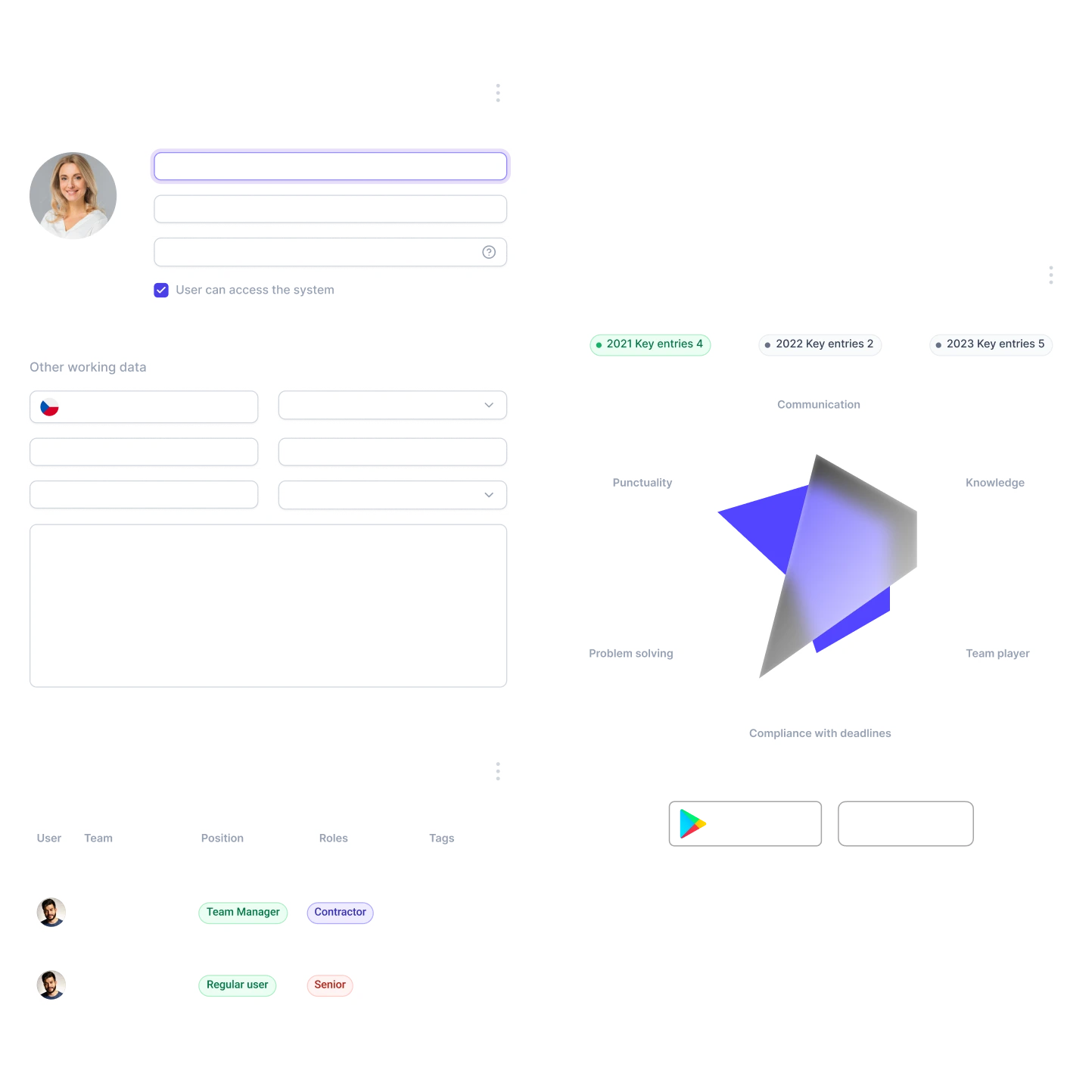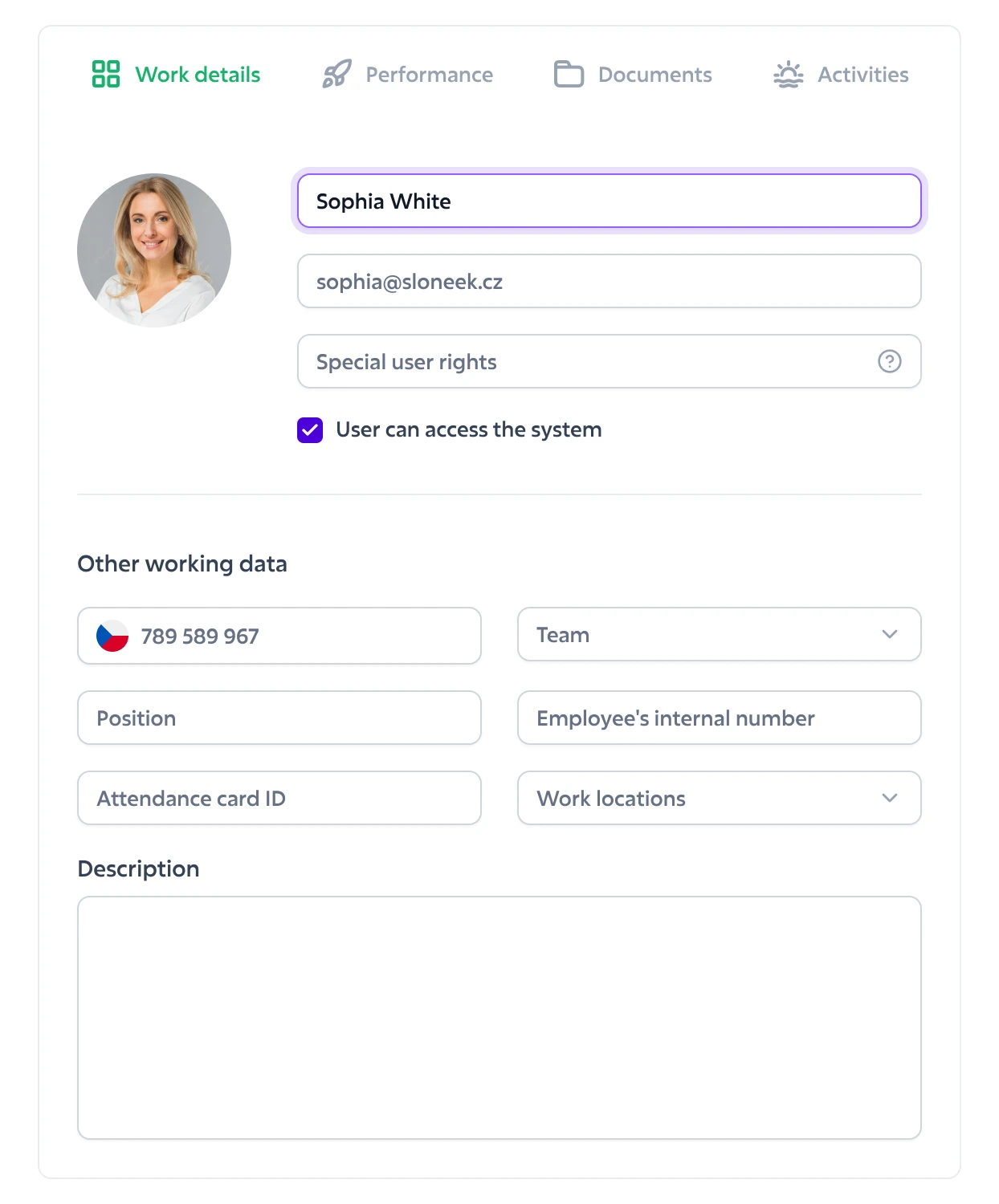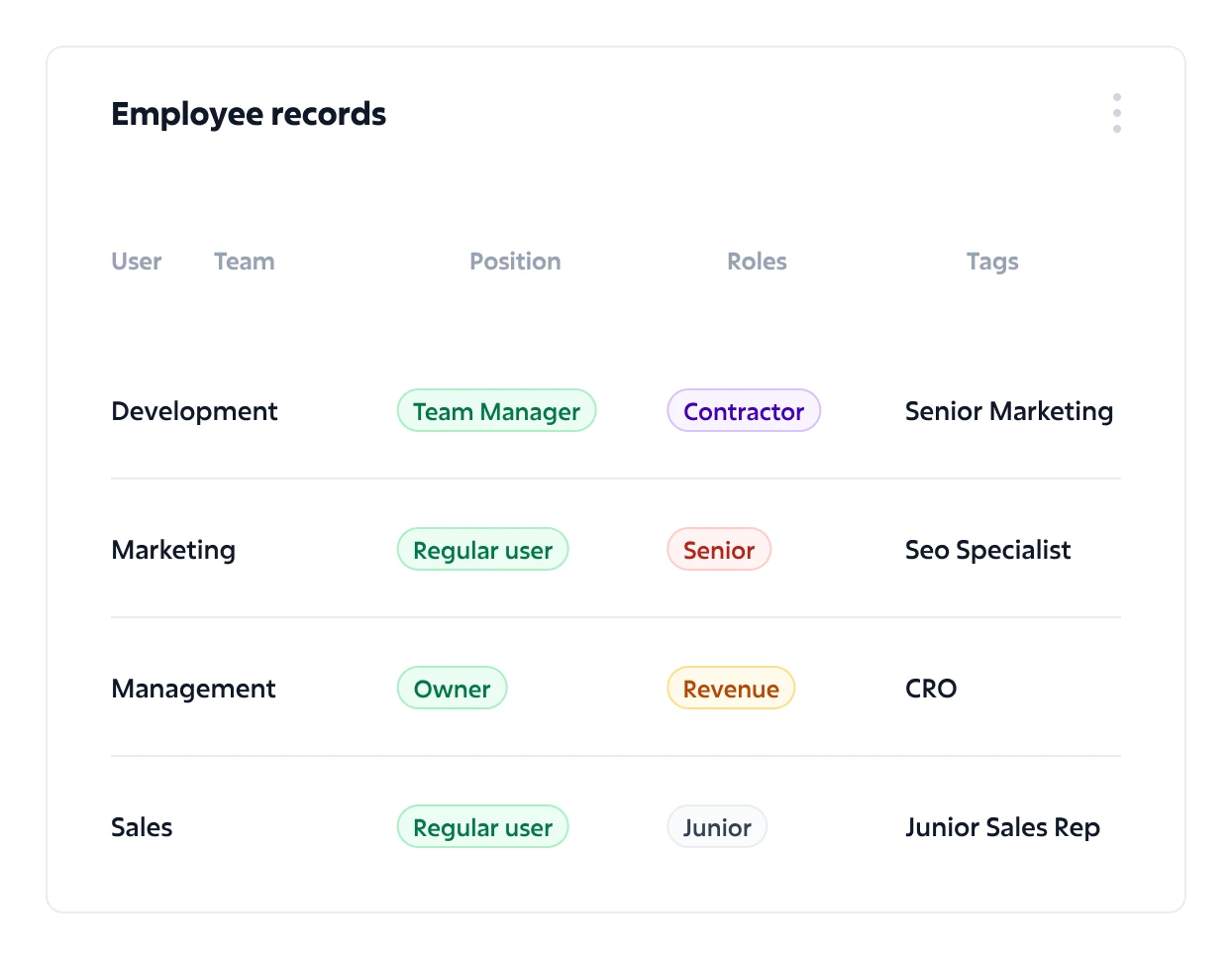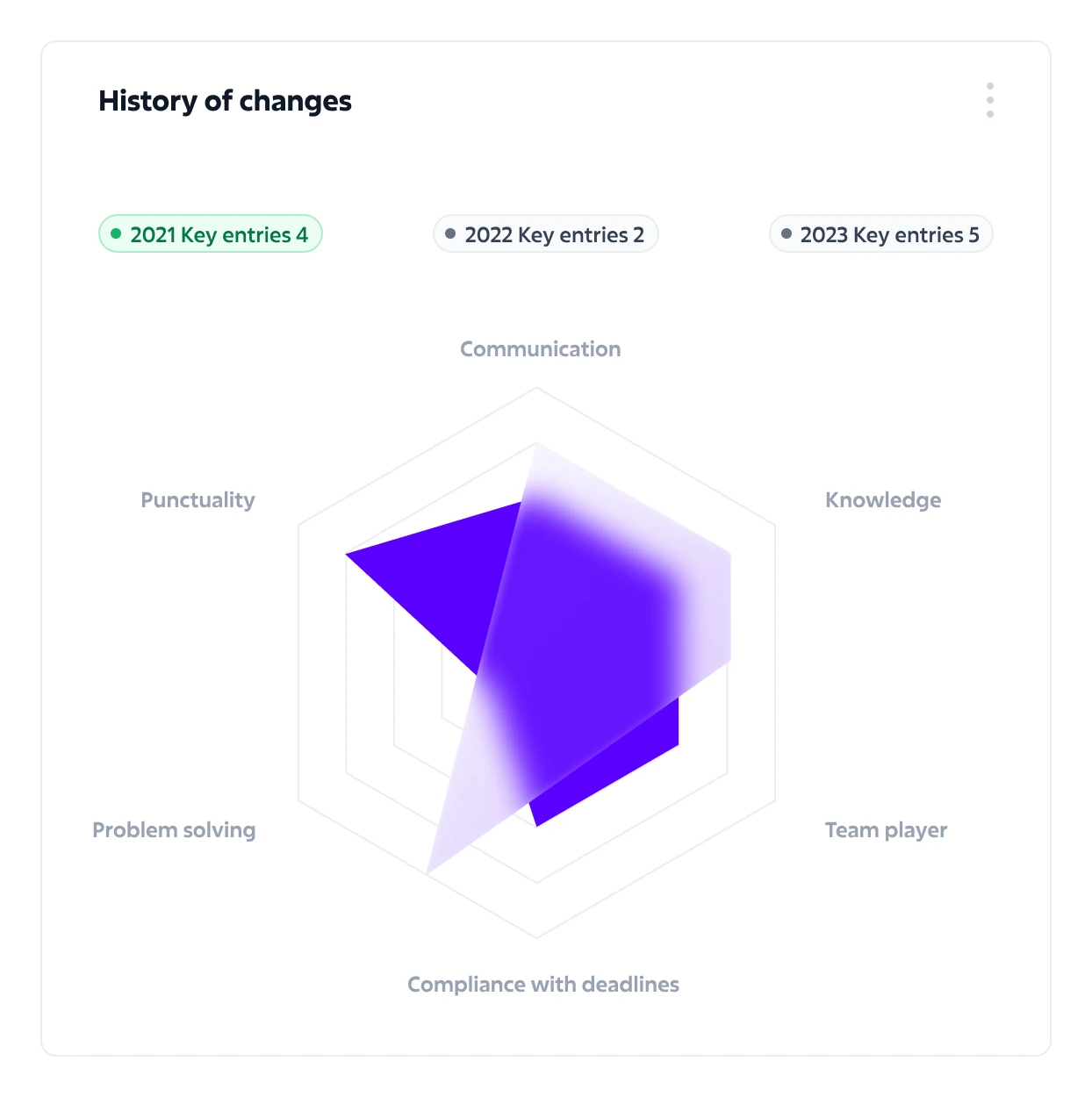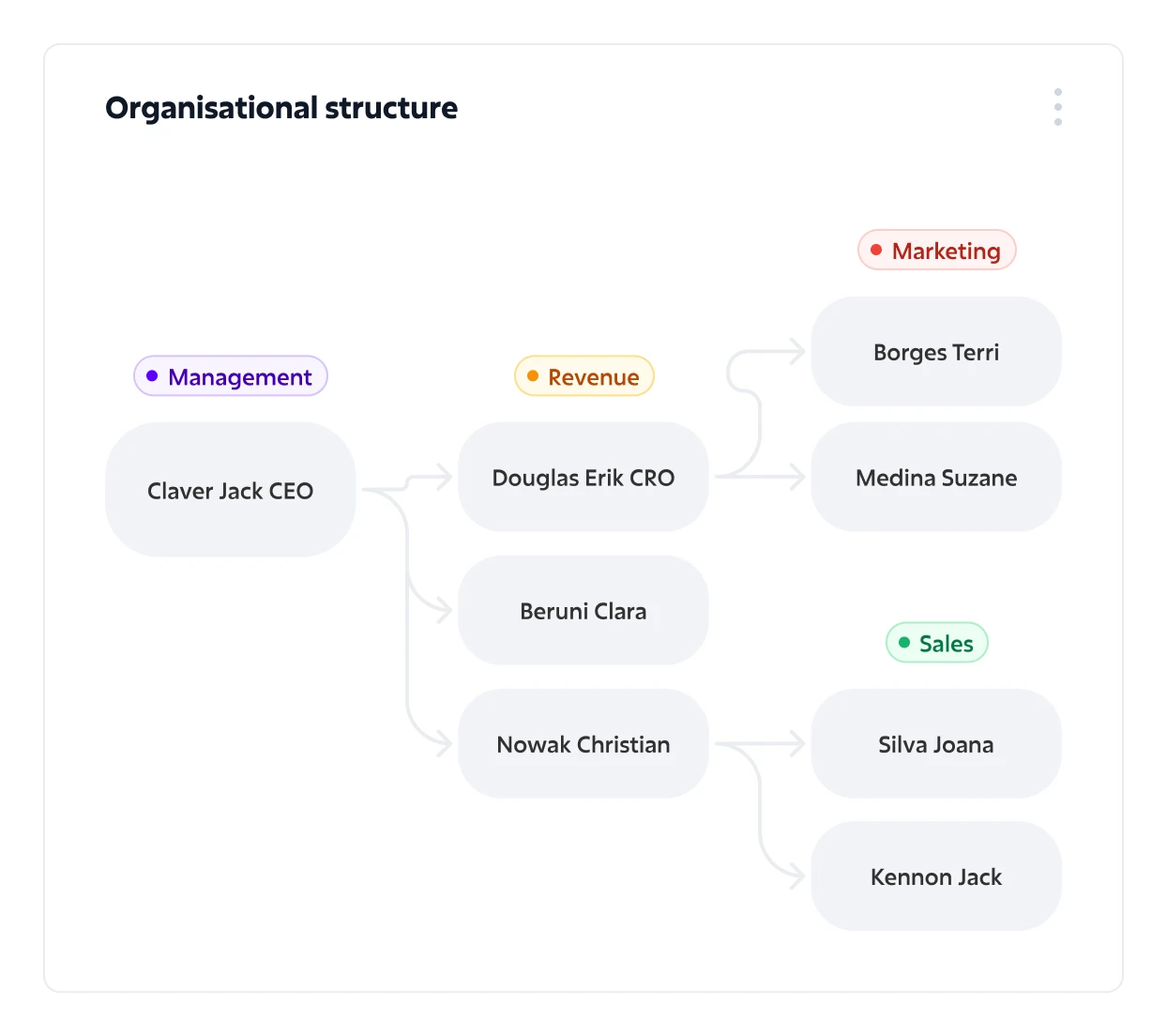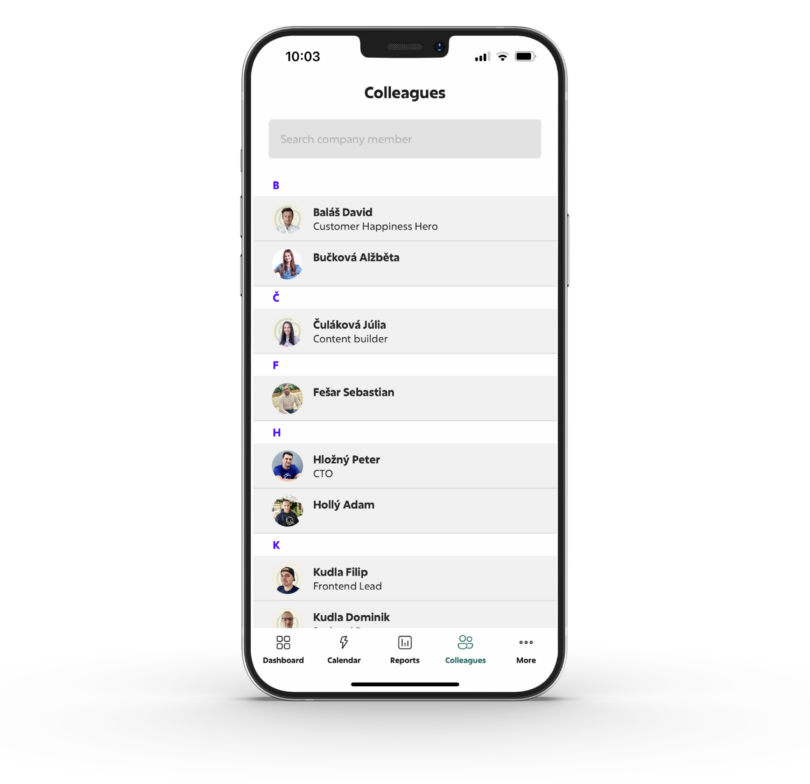How to Effectively Manage Employee Records with Modern Tools
How much time do you spend searching for employee information? Or transcribing data between different files? If your answer is “too much,” it’s time to change your approach. Say goodbye to spreadsheets and piles of papers when you can have electronic employee records that make your life easier. Everything in one place – fast and efficient!
Managing and maintaining employee records is not just a bureaucratic task. It’s key to the smooth functioning of your business. Without an effective system, it’s easy to get lost in attendance, contracts, or important documents, which can lead to chaos. Luckily, in the digital age, we have smart tools available that allow us to organize and simplify all these processes. Let’s take a look at how modern technology can transform your approach to HR management.
Employee Personal File: Key Data for Management
Every employee should have a personal file that collects all important information and documents related to their employment. It’s a practical way to stay organized and comply with legal requirements. What should this file include?
- Basic personal information: Name, date of birth, contact information, and permanent residence address.
- Employment documents: Signed contracts, amendments, records of changes in working conditions, and the probation period.
- Salary information: Bank account details, records of salary conditions, or an overview of paid bonuses.
- Attendance: Overview of absences, overtime, working hours.
- Health records: Confirmation of health suitability, medical check-ups (entry and exit).
- Training and education: List of completed courses, certifications, or professional training.
- Performance evaluations within performance management systems.
Special attention must be given to data security, as this information is protected under GDPR. Digitizing personal files is therefore an ideal solution – all data is protected, easily accessible, and always up-to-date.
If you are wondering how to improve employee records, focus on the personal file, as it will help you not only meet legal obligations but also keep essential information in one place.
Streamline Employee Attendance Records
Manual attendance tracking? That’s a thing of the past. Automated employee attendance tracking offers an overview of working hours – who was at work, who took time off or worked from home, and how many hours each person worked. HR systems also make it easy to calculate total working hours and quickly prepare materials for payroll calculations.
By connecting attendance data with other modules such as shift planning, project scheduling, or payroll management, you save time and minimize errors.
Goodbye to Chaos with Spreadsheets
You might still be tracking employee attendance and working hours in Excel. But let’s face it – manually entering data, transcribing, or searching for the right sheet takes up a lot of time and introduces the risk of errors. Electronic records offer a solution. In a modern employee management program, you have all the data in one place, up-to-date and accessible with just a few clicks.
Team and Organizational Structure: Clear Relationships and Responsibilities
How is your team structure? Who is responsible for what? Who reports to whom? A clear organizational hierarchy facilitates communication, decision-making, and planning. Modern HR software can create a visual organizational chart that automatically updates according to changes in the team structure.
Change History: Overview of Important Events in One Place
One of the key features of modern HR systems is the ability to track change history for each employee. This function ensures clarity, transparency, and helps managers and HR specialists stay updated on key events in their team’s work life.
What changes can be tracked?
- Promotions and role changes: Once an employee is promoted or transitions to a new role, the system records this change.
- Bonuses and rewards: Every bonus or special reward is recorded in the system, so you have an overview of the benefits and rewards an employee has received.
- Completed evaluations and feedback: Tracking job performance is made easier with a change history.
Benefits for Team Managers
Managers benefit from the change history as it provides a perfect overview of each team member’s development. They can easily track who was recently promoted, who deserves a reward, or who completed important training. This information is available anytime, anywhere, making decision-making and planning employee development easier.
Transparency and Control
Change history in HR systems isn’t just about record-keeping. It’s also an essential tool for transparency and control. All modifications, from changes in salary conditions to updates of personal information, are recorded with precise dates and the identification of the person who made them. This minimizes the risk of errors, improves organization, and builds trust in teamwork.
Why Invest in an HR System?
HR digitalization brings countless benefits:
- Time savings: No more endless document searching.
- Accuracy: Data is up-to-date and error-free.
- Security: Electronic systems meet GDPR requirements.
- Clarity: From attendance to personal employee files – everything you need is at your fingertips in one place.
Companies that invest in digitalization gain a competitive advantage. Employee management becomes easier, faster, and more transparent. Modern HR systems save time, minimize errors, and improve team efficiency.
Change may seem like a big step at first, but trust me, it’s worth it. The next time you’re dealing with missing documents or struggling to find employee data, remember how simple it could be with digitalization, automated and streamlined.




